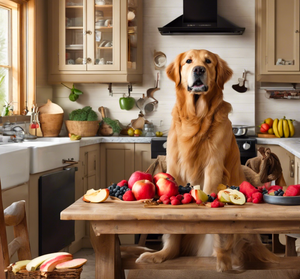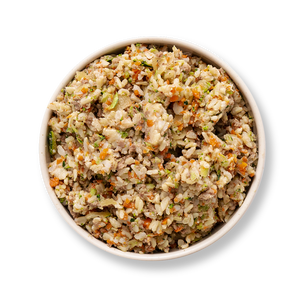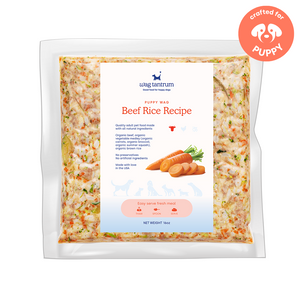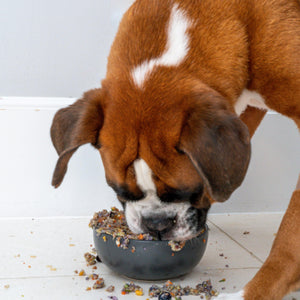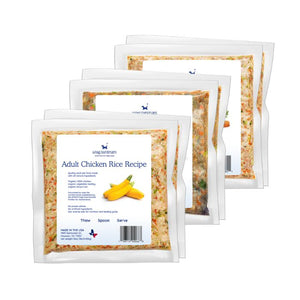My Dog Only Wants Treats
My Dog Only Wants Treats: Expert Guide on Fruits Dogs Can Safely Eat
Did you know that a healthy dog can survive for over a week without eating? However, when our furry friends become picky eaters, especially those who only want treats, we naturally worry about their nutrition. As a pet parent wondering if dogs can eat fruit and other alternatives to commercial treats, I understand this concern.
In fact, many of us unknowingly create fussy eaters by offering too many food choices - from various kibble flavors to different textures of wet food. When our dogs turn their nose up at their regular meals but show excitement for treats, it's usually a sign of learned behavior rather than necessity. While finding the best puppy food might seem challenging, there's a simple solution: incorporating healthy alternatives like certain fruits into their diet can help break this pattern.
In this guide, I'll share effective strategies to help your treat-obsessed pup develop better eating habits, and explore which fruits are safe and beneficial for our four-legged friends.
Breaking the Treat Dependency Cycle
Let's talk about breaking your dog's treat dependency - a challenge I've helped many pet parents overcome. Understanding why dogs become treat-dependent is our first step toward a solution.
Here are the clear signs your dog might be overly dependent on treats:
They refuse to follow commands without visible treats [1]
They show frustration or lack cooperation when treats aren't present [1] They only respond to training when treats are shown [1]
Accordingly, we need to shift from using treats as bribes to using them as rewards. The key difference? Never show the treat before your dog performs the desired behavior [2]. Furthermore, I recommend starting each training session without revealing treats immediately [1].
To effectively break the cycle, we should implement what trainers call "intermittent reinforcement." Specifically, this means rewarding your dog occasionally instead of every time they follow a command. Initially, reward four out of five correct responses, consequently decreasing to three out of five over time.
One effective strategy I've found is creating a diverse reward system. Instead of relying solely on food treats, incorporate praise, favorite toys, or playtime as rewards [4]. Additionally, make sure to deliver rewards quickly after the desired behavior - timing is crucial for effective training [4].
Remember to keep treat calories within 10% of your dog's total daily calorie intake [5]. This helps prevent unwanted weight gain furthermore ensuring your pup maintains a healthy relationship with food.
Natural Treats for Picky Eaters
Looking for healthy alternatives to commercial dog treats? I've discovered that many fruits make excellent natural treats for our four-legged friends. These options aren't just delicious - they're packed with nutrients that can benefit your pup's health.
Here are some fruits that I've found to be particularly beneficial for dogs:
Watermelon: It's 92% water and perfect for hot summer days [6]. Moreover, it's rich in vitamins A, B6, and C [7] Blueberries: These superfoods are packed with antioxidants and make perfect training treats [8]
Apples: They're full of vitamins A and C, plus they're an excellent source of fiber [8]
Bananas: Rich in potassium, vitamins, and fiber - though use these sparingly due to their sugar content [8]
Safety First: I always remind pet parents to prepare fruits properly. Indeed, it's crucial to remove seeds, cores, and rinds [8]. Primarily, this prevents choking hazards and potential digestive issues.
For an extra special treat, I love making frozen fruit treats. Simply blend watermelon with a small amount of plain yogurt and freeze in ice cube trays [4]. This creates a refreshing treat that's particularly enjoyable during warm weather.
Notably, while fruits make excellent treats, they should only make up a small portion of your dog's diet. Think of them as occasional rewards rather than meal replacements. When choosing treats, I recommend selecting options that can be easily
broken into small pieces [3], making them perfect for training sessions or quick rewards. Training Techniques for Better Eating Habits
Establishing proper eating habits starts with a consistent routine. I've found that setting regular mealtimes creates a foundation for healthy eating behaviors. Primarily, dogs should eat twice daily, with meals spaced 7-12 hours apart [2].
One technique I always recommend is the timed feeding method. Place your dog's food down for 15-30 minutes, then remove whatever isn't eaten [1]. This approach helps prevent grazing and establishes you as the food provider.
Here are my top training tips for better eating habits:
Feed in the same location daily to boost security and familiarity [9]
Use food toys or puzzle feeders to make mealtimes engaging [5]
Hand feed occasionally to strengthen your bond [5]
Remove food bowls between meals to prevent begging [10]
Notably, I've seen great success using interactive feeding toys with my clients' dogs. Since these tools require mental effort,
they help prevent boredom and reduce problem behaviors [5]. Generally, I suggest starting with simple puzzle toys and gradually increasing difficulty as your pup becomes more experienced.
For anxious or stressed dogs, I create a quiet feeding environment away from household traffic [11]. Straightaway, this helps
them feel more comfortable and focused on their meal. Remember to praise your dog when they eat from their bowl [12] - this positive reinforcement helps establish good mealtime behavior.
Conclusion
Breaking a dog's treat dependency might seem challenging at first, though the right approach makes all the difference. Through my experience working with countless pet parents, I've seen how simple changes like proper training techniques, healthy fruit alternatives, and consistent feeding schedules can transform a treat-obsessed dog into one with balanced eating habits.
Remember that change takes time and patience. Start by replacing some commercial treats with safe fruits like watermelon or blueberries, while gradually implementing the timed feeding method. This combination helps create a healthier relationship between your dog and food.
Most importantly, stay consistent with your chosen approach. Whether using puzzle feeders, establishing fixed mealtimes, or practicing intermittent reinforcement, your dedication will help your dog develop better eating habits. After all, our ultimate goal is raising happy, healthy pets who enjoy their regular meals as much as their occasional treats.

